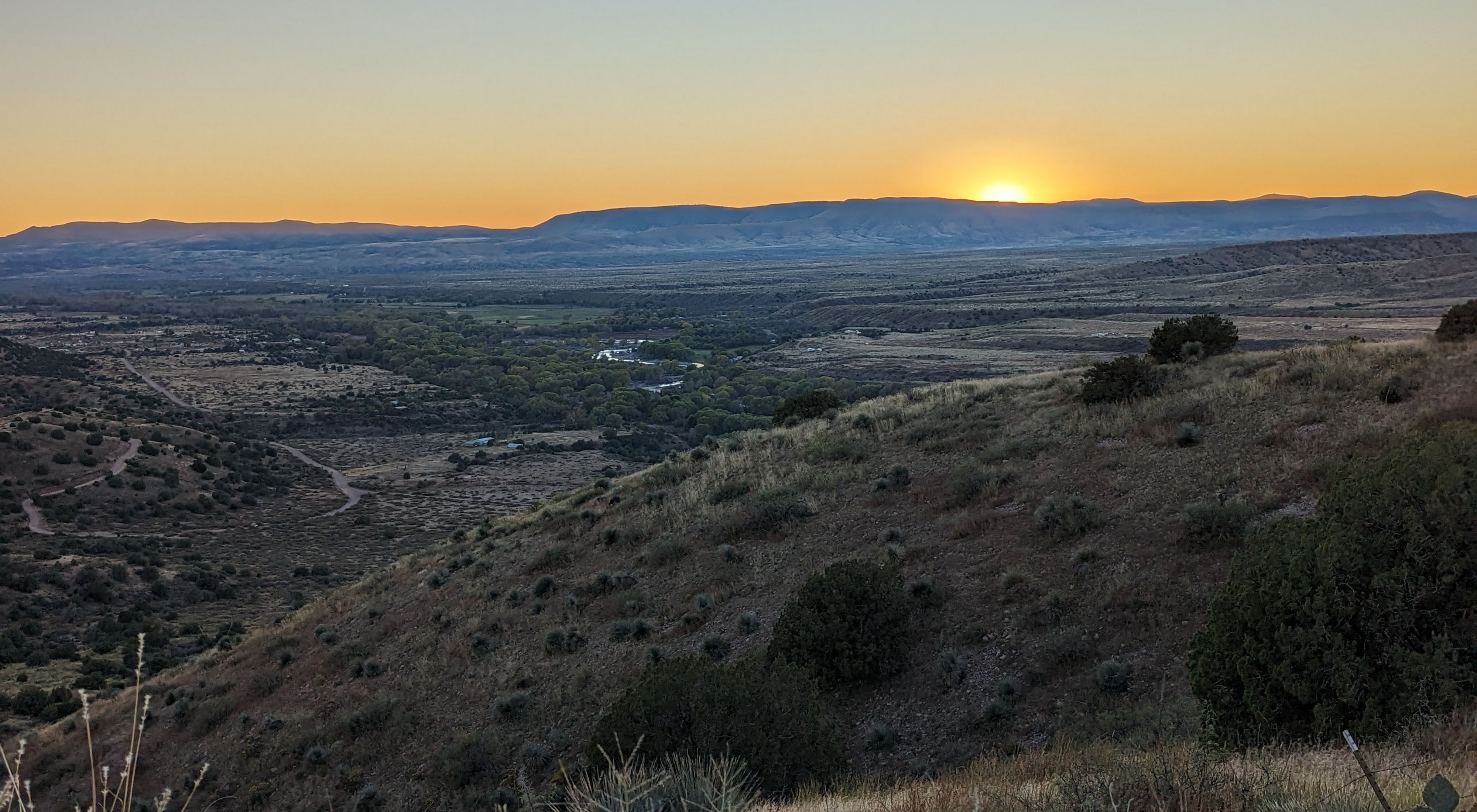Protecting People and Water, One Prescribed Burn at a Time
An inter-agency fire team including TNC's Scot Steinbring successfully completed an 83-acre Mangas Divide prescribed fire that will help reduce wildfire risk and secure water for people and nature.
Media Contacts
-
Tracey Stone
Associate Director of Communications
Phone: 602-738-1586
Email: tstone@tnc.org
Prescribed burns make a difference in southwestern New Mexico. Last week, an inter-agency fire team—including Scot Steinbring from The Nature Conservancy (TNC) who served as the burn boss—successfully completed the 83-acre Mangas Divide prescribed fire on property managed by the New Mexico State Land Office.
The primary goal of the NM State Land Office in implementing this prescribed burn project was to safely reintroduce low intensity, surface fire to ponderosa pine forest while also eliminating slash piles from a recent thinning project and promoting new growth.
“Teaming with TNC alongside our partners from the Ember Alliance, Forest Stewards Guild and local fire departments continues to be a successful model for collaborative prescribed fire on New Mexico state trust land,” said Mark Meyers, a forester with New Mexico State Land Office. “The Mangas Divide Prescribed Fire exemplified the team's commitment to safe and responsible burning, restoring a fire-adapted ponderosa pine forest, community engagement and providing high-quality training opportunities to a diverse team of firefighters.”
Adding to Meyers’ sentiment, Steinbring said his focus is “to learn from the past, train the present or fail the future.”
This year’s Black Fire in Sierra County underscores the need to improve the forests and watersheds in the region. Warm and extremely dry conditions enabled the Black Fire to burn over 325,000 acres, narrowly missing igniting homes and communities.
“After such a horrific wildfire season earlier this year, I’m proud that our staff and partners took appropriate precautions to ensure this prescribed burn completed without incident,” said Stephanie Garcia Richard of New Mexico Commissioner of Public Lands. “We made a deliberate choice to conduct the burn in the fall due to weather conditions that are often more suitable for prescribed burns and kept boots on the ground after its conclusion to ensure it didn’t spread out of control.
“Being good stewards of state land is our responsibility, but the safety of New Mexico’s residents always comes first,” she said. “We are building a blueprint for how to conduct necessary fire management in a safe and thoughtful manner.”
Another controlled burn is planned for late November. Steinbring said tactics like these are building blocks that reduce wildfire risk, secure water, protect people and enhance wildlife habitat. Proactive forestry actions—such as prescribed fire—change wildfire behavior and reduce the severity of effects. This was evident during this summer’s Midnight Fire in northern New Mexico when a severe fire became a ground fire, according to Steinbring.
Bianca Gonzalez, a landscape scale planner for New Mexico State Land Office also supported the prescribed fire. She was pleased to see that 60 percent of crew members were women and she emphasized the need to attract younger practitioners as the older generation retires.
“The Gila National Forest looks forward to expanding our relationship with The Nature Conservancy to reintroduce fire to the landscape,” said Henry Provencio, district ranger for the Gila National Forest, Wilderness Ranger District. “By continuing to work with their fire crews on prescribed burns and by managing their grazing allotment, we have places to better control the landscape or graze livestock while other allotments are treated with prescribed fire. The Mangas burn is just one example of what we can accomplish on the landscape when we work together.”
In addition to proactive forest restoration strategies, TNC and partners work to improve the health of the Gila River along 1,200 acres of the southwest’s important riparian habitat.
“We have built a foundation of amazing partners who share common goals that benefit people and nature,” said Martha Cooper, TNC’s freshwater program director for New Mexico. “By collaborating on projects that are important to all of us, we can increase the scale of the work.”
The Nature Conservancy is a global conservation organization dedicated to conserving the lands and waters on which all life depends. Guided by science, we create innovative, on-the-ground solutions to our world’s toughest challenges so that nature and people can thrive together. We are tackling climate change, conserving lands, waters and oceans at an unprecedented scale, providing food and water sustainably and helping make cities more sustainable. The Nature Conservancy is working to make a lasting difference around the world in 81 countries and territories (40 by direct conservation impact and 41 through partners) through a collaborative approach that engages local communities, governments, the private sector, and other partners. To learn more, visit nature.org or follow @nature_press on X.
